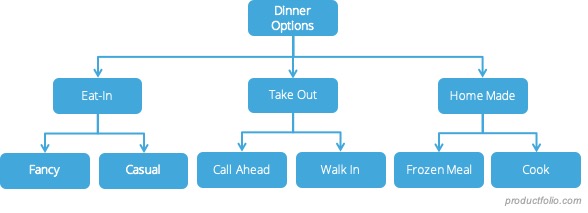What is the MECE Principal?
MECE stands for Mutually Exclusive, Collectively Exhaustive – “completely” is sometimes used in place of “collectively.” It is a principle commonly used by management or strategy consultants for making complex ideas easier to grasp. It offers a systematic framework for solving complex problems, sharpening your thinking and removing confusion.
Management consultants spend the bulk of their time trying to crack intricate problems. The MECE principle is one of their favorite tools because of how it makes such tasks easier. It makes it possible to break down thorny problems into basic parts for better evaluation and improved clarity.
The principle is credited to Barbara Minto, who explained it at length in her logical problem-solving book, The Pyramid Principle.
Breaking it Down
The MECE calls for the decomposition of a big problem into two categories for a clearer understanding and proper action. These parts are:
- Mutually Exclusive
- Collectively Exhaustive
The Mutually Exclusive part is based on an idea from probability theory that describes two or more events that cannot occur at the same time. A six-sided die gives a perfect example – you can only get one outcome when you roll it. In MECE Principle, this concept means that items or ideas can only belong to a single category.
On the other hand, Collectively Inclusive indicates that the entire set of things or ideas can fit into a category. It implies that a set of items includes all possible options. Using the die again, all its outcomes (1, 2, 3, 4, 5, and 6) would fit into a collectively exhaustive category.
The MECE Principle essentially ensures that there are neither overlaps nor gaps. It enables you to break down complex problems into multiple, distinct groups that make solving easier.

Effective Segmentation with MECE
It is not uncommon to see organizations come up with grouping structures with gaps or overlaps. That is often the result of not adopting a systematic approach, such as the MECE Principle.
A less systematic segmentation approach has the tendency of leading to faulty thinking patterns that fail to address strategic matters. It results in duplication of labor, waste of precious resources, and possibly lost opportunities.
An example of this type of segmentation would be grouping clients or customers based on their interests or hobbies. Some may have more than one interest (not mutually exclusive) or none of those indicated (not collectively exhaustive).
MECE segmentation helps to prevent issues such as those described above. You can apply it in a variety of situations, both in personal life and business. You could, for instance, use it to simplify a problem statement into a set of hypotheses, structure an argument, or break projects into smaller parts.
One of the most common and simplest uses of the MECE principle is in the grouping of people according to their ages or other factors. You can use it to classify persons or customers into comparable categories with no overlaps or gaps.
MECE and Case Interviews
The MECE Principle can be quite helpful for those preparing for consulting case interviews. It provides a very useful tool for problem structuring and solving. You will need to apply it in different scenarios during the management consulting recruiting process.
Usually, you will be confronted with situations to tackle with minimal data during case interviews. The attempt here is to assess your ability to grasp and deal properly with uncertain situations.
MECE helps you to be organized and methodical in your responses. It removes the anxiety that could make you come up with flawed ideas. You use the principle to break down your high-level answer into smaller parts that are easier to follow and understand.
The profitability framework presents a good example of the MECE principle in action. Profit is broken down into cost and revenue – factors that determine it. Revenue, in turn, is divided into price per unit and volume while cost is divided into fixed and variable costs. Furthermore, variable costs can be broken into cost per unit and volume.
Frameworks provide a good starting point for tackling scenarios presented during case interviews. Even if you can’t come up with a clear one, try to be MECE-enough (as CaseInterview puts it) by narrowing your answer down as much as possible.
Best Practices for MECE Principle Application
No overlaps – No items or elements in a set must belong to more than one category. This requires careful thinking before creating categories. Meticulously, look out for situations where an element may fall into more than one category, maybe due to an oversight.
The sum must equal the whole – When you add up the components in a structure, you should get the whole group. This is the “collectively exhaustive” requirement and an absence of gaps. Let’s assume you have segmented your customers into seven mutually exclusive groups; leaving out a group will create a gap.
Limit elements – It may help to not have too many items in a set. Coaching service CaseInterview recommends having no more than four items per set. While this is not an obligatory requirement for MECE, this helps to make your framework easier to comprehend and remember.
Make categories comparable – You may run into problems when you work with groups that are not comparable, although they appear so on the surface. For instance, it will be wrong to treat the average population of states in the U.S. on the same basis as that of individual states.